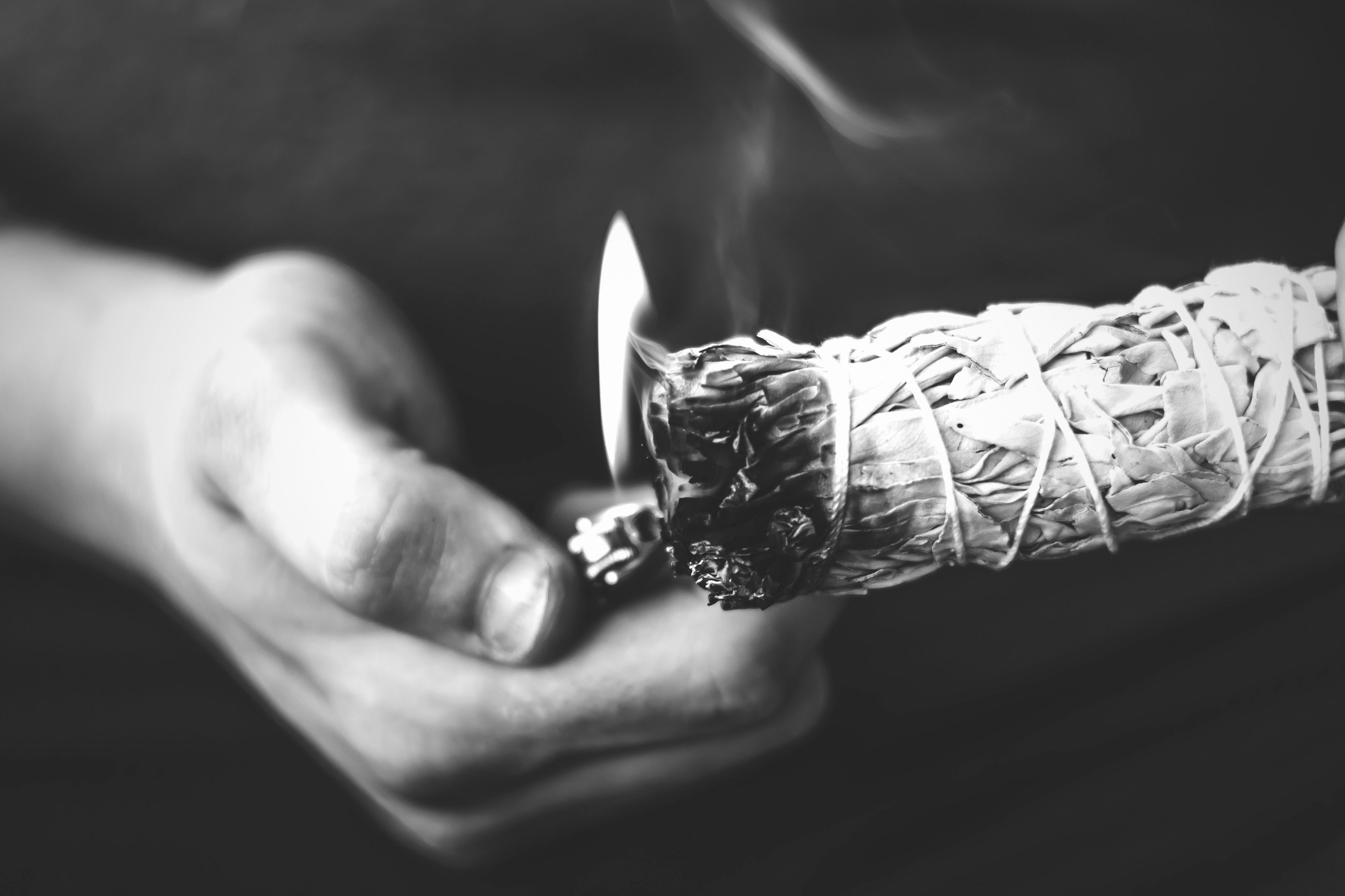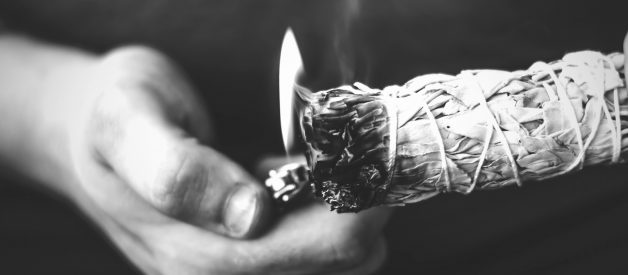
Throughout the health, wellness, and spiritual community there has been a new topic of concern: ethics. Specifically, the ethics surrounding the plants we use in our rituals to cleanse and protect and the cultural appropriation of those rituals.
In most esoteric and new age bookstores/shops, you will find sage and Palo Santo sold as tools to cleanse spaces, releasing negativity, and create an environment free of toxic energy. While they do both have the ability to heal, these plants have been subjected to modern practices that have changed and even destroyed some of their intended purposes. The Palo Santo tree is currently endangered and is on a watch-list. According to The United Plant Savers Medicinal Plant Conservation, there are less than 250 mature adult trees in the wild, and still, numbers are declining. While the tree is not yet nearing extinction, it has been added to the International Union of Nature Conservation?s list due to its over-harvesting which can lead to extinction. While some information circling the internet is ambiguous (in some regions it is difficult to keep clear records), we should still be mindful and careful when it comes to using sacred plants and endangered plants because it has become trendy to do so. In Peru and Ecuador, it is illegal to cut down Palo Santo trees, but it is not easy to enforce such a law. According to the sacred beliefs and in order to gain the actual benefit of the tree, a Palo Santo tree should never be cut down, and it should not be sold as a commodity. The only true way to get the highly therapeutic oils from the tree is by letting it rest on the forest floor to age for four to ten years. Many of the benefits are lost when the tree is cut down prematurely, in fact, the greatest portion of benefit is not to those who care for its sacred properties ? but rather those that care only for its profits. Indigenous communities across North America agree that Palo Santo, along with White Sage, should not be sold as a commodity, but rather be given to you by a shaman or someone within the community to ensure it actually has the sacred benefit that it is being used for.
In addition to Palo Santo, White Sage was never meant to be used as a tool to cleanse, but rather for fierce protection! Because this herb has received a great deal of attention and has become a trend (even being picked up at one point by brands like Urban Outfitters), profiteers are cutting down the trees for immediate economic gain while westerners buy it in droves without knowing or caring about the sourcing or ethics of its harvesting.
The use of these herbs again broaches the codes of ethics when viewed under the lens of cultural appropriation.
When we use these sacred rituals without consideration for their creators we are actively choosing parts of Indigenous cultures that we like while turning a blind eye to the things we don?t.
Additionally, by using these rituals without context or respect it undermines the actual importance behind the practice and gives ?westerners? the idea that they can commodify other cultures beliefs for their own personal gain. This is harmful for a slew of reasons including:
- That it means we have turned something sacred into a commodity for personal gain (which has, as a result, become endangered).
- That we lose the actual value of the sacred herb/ritual.
- And that by stealing the ritual ? which other cultures have been practicing for hundreds of years ? we further perpetuate the divide between us by bastardizing their honored traditions.
When it comes to something like White Sage, which North American Indigenous communities have been using for years, our appropriation of it is hurtful because these very communities were banned from practicing their religious beliefs for decades by white settlers and government bodies. To suddenly mark it as trendy and want to use it means we are only taking what we like or find nifty from the aspects of Native culture that we want for ourselves while still ignoring the history and atrocities the Indigenous Communities had to endure.
Certain Herbs and Plants that are sacred to Indigenous communities that we should not use for commercial profit when it comes to smudging (or cleansing) include:
Palo Santo
White Sage
Sweetgrass
Cedar
Tobacco
There are a few alternatives that can be used for space cleansing, however, the best thing to do is find plants local to your region or? grow your own! Growing your own ensures that you are consuming within a boundary that you?ve set and that no communities or wildlife gets hurt in the process. The benefits of growing your own herbs are many and have huge therapeutic elements. It reconnects you to the earth and nature, and affects your mind in a positive way, giving you benefit beyond just the smudging or burning aspect of the practice. Nurturing and growing a plant is a form of self-care, giving you balance, grounding you and providing purpose, similar to what burning a bundle would do. You can grow herbs with limited resource and even do so in the comfort of apartment city living! Additionally, some sage can be found that is grown, sold by, and directly supports Indigenous Communities so make sure you do your research.
Some alternatives to Palo Santo and White Sage are:
Juniper
Lavender
Vervain
Mugwort
Pine
European Sage
Rosemary
Mint
Dill
The answer is not to stop using cleaning rituals altogether, but rather to learn about their origins and the communities that created them in an effort to better support the Indigenous Communities from which they came. Go out of your way to learn about the history and culture. Use alternatives to the sacred, and now endangered, varieties of White Sage and Palo Santo. There are many ways you can support Native cultures, for more information please see this article by The Guardian entitled: ?Nine ways to support the rights of indigenous people.? We are huge fans of celebrating different cultures and encourage you to embrace and learn as much as you can while working to protect the precious plants of their sacred rituals.
About the Author:
T?Lark, both Choctaw & Mayan Indian, with a gypsy spirit and the heart of a wolf, is a 300 hour RYT yoga instructor specializing in primal and intuitive movement. She also utilizes intuition to deepen her gift as a medium and intuitive tarot reader. She uses her connection with the spirit of the wolf to teach the ways in which we were once closer to the earth, to connect us to the teachings of the moon and her phases, and to pull together a community of wild hearts and souls sharing wisdom and knowledge and creating a Wolfpack of magical beings! She is a valued member of team TRILUNA and can be found on Instagram @howling.yogi.


